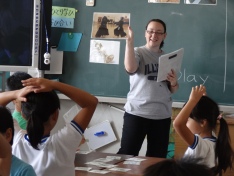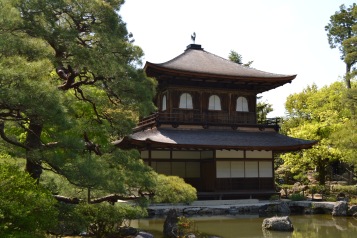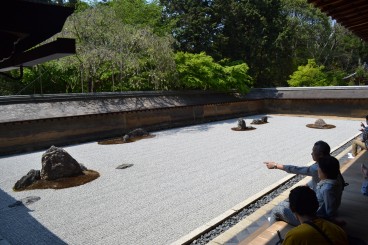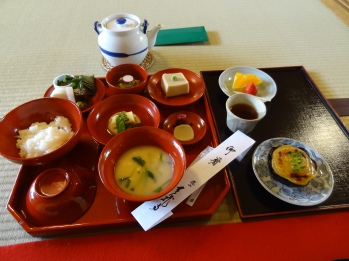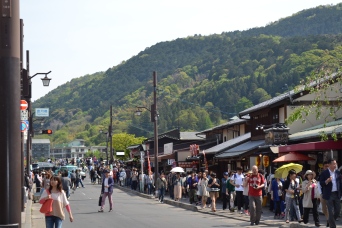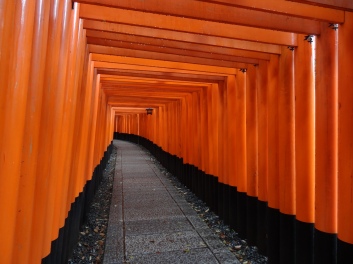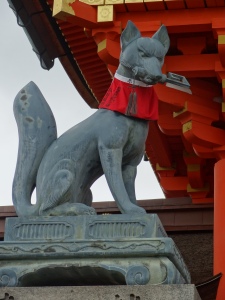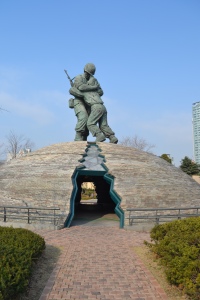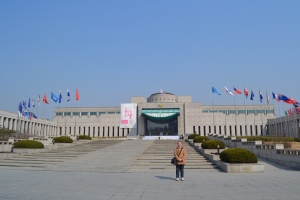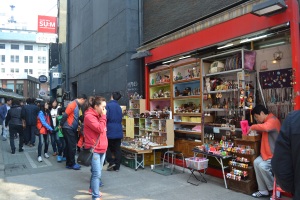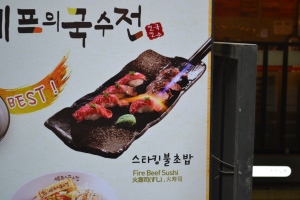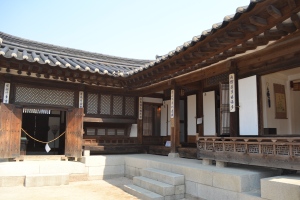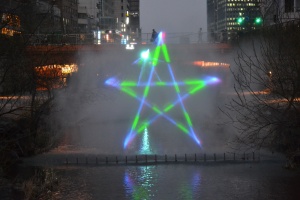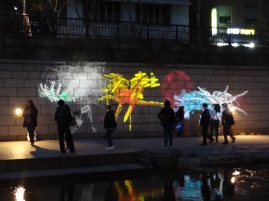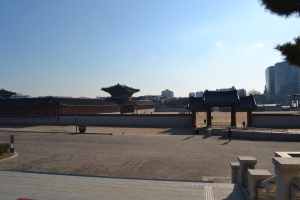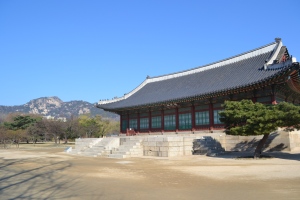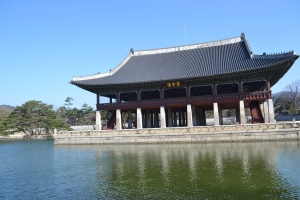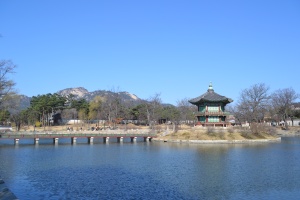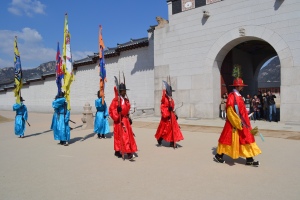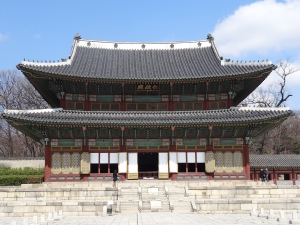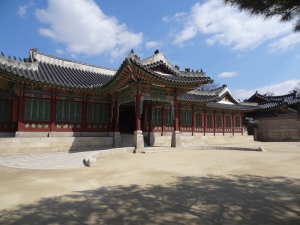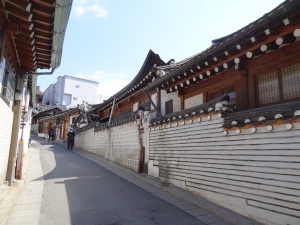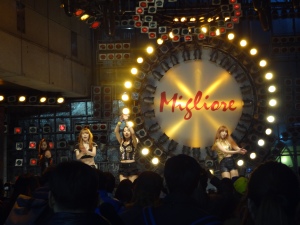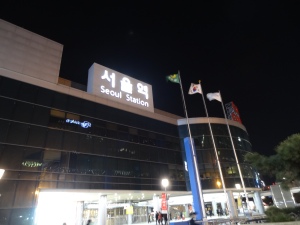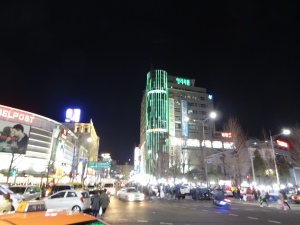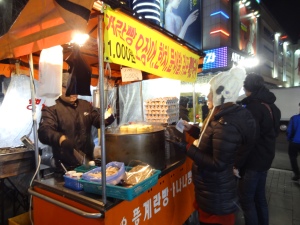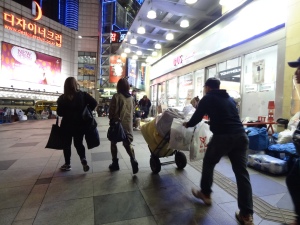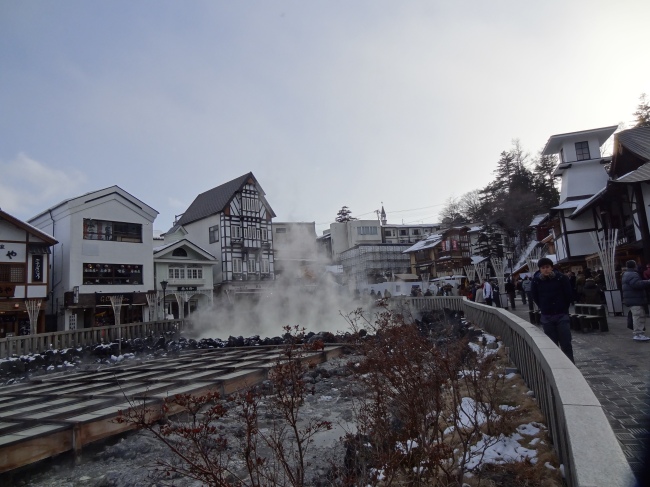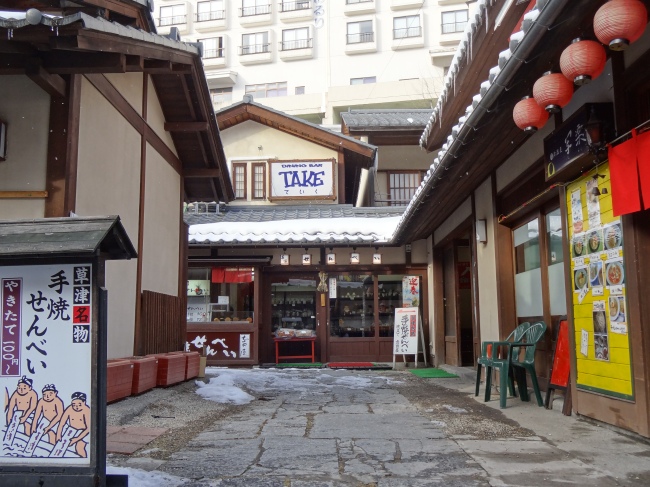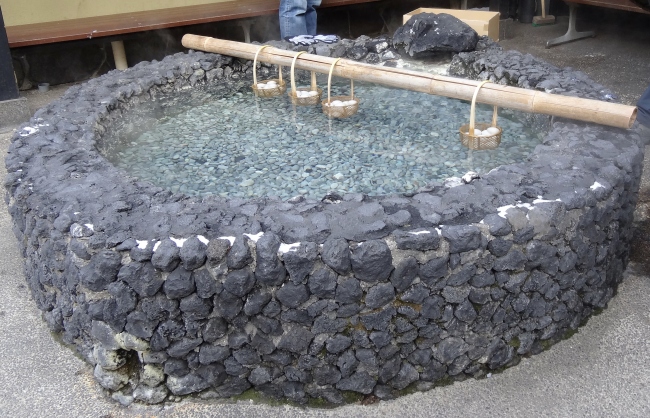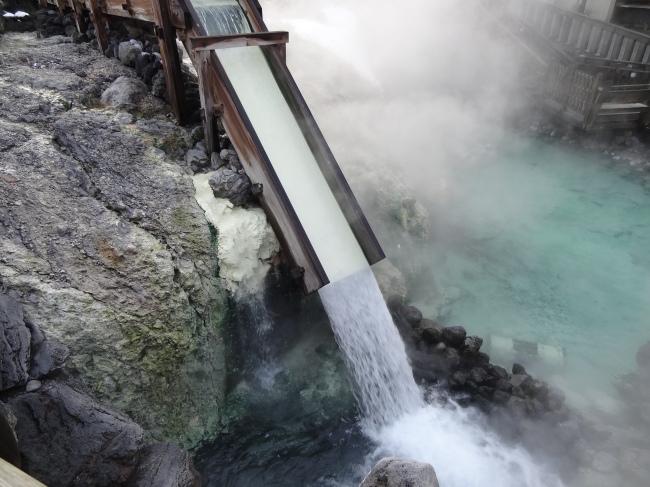I am now, officially, a professional freelance translator. Someone has actually given me money to translate something from Japanese into English. I haven’t quit my day job yet, but it feels really good to make some extra cash. I’m still giddy about the idea, and feel a little like an imposter. Translator! Me? I do translating and interpreting at work but it’s not my official job title. I’m checking one item off of the career bucket list today.
Latest Entries »
Becoming an independent adult in a foreign country was quite the adventure, but I’ve had to spend the last year adjusting to the work culture and expectations as an adult in the U.S.
1. My living expenses had to be adjusted. I pay less for fruits and vegetables but more for cable and internet. Electricity is cheap but healthcare is high. (At least now I can use the air conditioner in summer without breaking the bank.)
2. I can’t pay bills at the convenience store. I have to actually remember to write a check or pay online. And the late notices are less polite than in Japan.
3. Work doesn’t come home with me anymore. I don’t have an entire bookshelf dedicated to work materials.
4. Going to a Japanese restaurant/marketplace within the first few months of returning is not as fun as going about 6 months after returning. One year after returning is even more fun. It’s like going back in time.
5. I have to hold back the constant stream of “one time in Japan….” anecdotes. The struggle is real. I hope I don’t annoy too many people with stories.
I do have times when I want to go back to my old life in Japan, but those moments fade away quickly. Japan isn’t going anywhere, and when I get the vacation time, I’ll definitely visit again.
In the past I’ve received some negative questions about my choice of degree and my time on the JET Program. For example:
1. “You got a fun degree, didn’t you?” Asked while applying for a position with a bank in the loan department.
2. “The JET Program was easy, wasn’t it?” Asked while applying to work in human resources for a Japanese company.
These questions caught me completely off guard, mostly by the way they were asked, and I didn’t answer them very well. I think they go beyond the usual practice of asking something uncomfortable to see how you handle the situation, and get close to being insulting and condescending.
I hope I don’t have to ever answer the above type of questions again, but if they do reappear, I’ll be prepared.
1. I worked hard for my degree. I persevered for 4 years to finish it with good grades, while working part time on the weekends. It taught me critical thinking, independence, new perspectives, and it has been useful. Also, I didn’t study just Japanese. I studied statistics, history, business writing, and linguistics. I have knowledge of many different fields because of my degree.
2. The JET Program is different for everyone. Personally, I was given a lot of responsibility in my position. Through my own research I learned how to lesson plan, coordinate with teachers, and make engaging lessons for my students. It wasn’t easy until the very end, after years of practice. Then I left to pursue new challenges.
I like to think that if an employer can’t be positive about my past credentials, then I wouldn’t want to work for them anyway. We can’t all have degrees in business. The world needs liberal arts, too.
On another note, here’s a situation I found myself in that turned out very well:
1. “Describe your duties on the JET Program.” Ok, not too bad…
2. “Repeat what you just said in Japanese.”
If you advertise your language ability on your application, you may want to prepare for a situation like this!
It’s hard to describe what I’ve been going through these days. It’s soon coming up to 1 year since returning from the JET Program. It feels like the ‘honeymoon’ phase of my return to the U.S. is over (driving! wide open spaces! cheese!), and now I miss my old lifestyle . Here’s a few of the things that I miss about working in Japan:
1. A busy social life. Mine has just started to pick up a bit, but it’s not near what I had a year ago. The JET Program made it easy to build a social network within my community of other English teachers. At the same time, I got to spend time with my coworkers at various work events, dinners, or drinking parties. It felt very busy at times, but I was never lonely!
2. Every day was a new adventure. You really never knew what was going to happen on any given day. That sense of adventure made up for the language barrier, distance from family, and uncomfortable moments in life.
3. Public transportation and pedestrian/bicycle infrastructure. As much as I like driving, I also miss taking the train to the city or peddling my bike around town.
4. Working with kids. Those kids were the reason I woke up in the morning, and why I stayed up until 1 AM making classroom materials with glue and construction paper. I guess it’s not surprising that making a fun class for kids is more rewarding than working in an office. I hope someday I can find my rewarding dream job.
As I sit here this Thanksgiving Eve in America, I have a lot to be thankful for. Earlier this year I decided to not renew my contract on the JET Program and come home in July. I had 3 great years in Japan teaching English, and while staying there permanently might be for some people, I knew after a couple years that it wasn’t for me.
Before moving to Japan I spent 6 years studying Japanese and Japanese culture. I even got my B.A. in East Asian Languages and Cultures. From the moment I fell in love with the language I knew I had to live in Japan someday. I couldn’t afford to study abroad, but after the long application process I was lucky enough to be one of the people at Tokyo Orientation in 2011.
During my three years in Japan I spent most of my time teaching, thinking about teaching, or making teaching materials. I had to overcome a lot of challenges at first just to do my job, then do my job well, and then finally I was able to enjoy it. I also spent a lot of time studying Japanese, sacrificing my Saturday mornings to study with a tutor. After a couple years of study I was able to pass the JLPT N2 level. I wouldn’t say I’m great at Japanese, but I can definitely hold a conversation and read a document, more than I could have done right out of college.
The JET Program was a great experience, but coming back to the U.S. I was pretty worried about my job prospects. The economy hasn’t been that great, and even before the recession it was difficult to find a job with a B.A. in Japanese. I really wished I had paired my language skills with something practical, like business or computer science. So I was really surprised to find out that I was employable in the U.S. after coming back. People who can speak Japanese and are willing to learn some new skills are in demand, at least here in the Chicago area. I had three interviews with Japanese companies, and one job offer, which I happily accepted. I had been told so many times how difficult it was to get a good job with just a language degree, that I had psyched myself into thinking it would never happen. Now every day I get to use Japanese and English. I even help my Japanese coworkers adjust to living in a foreign country, something that I am extremely familiar with!
My current job is probably just one of many as I create my career, but for now I am very thankful for it and my coworkers.
Recently I made my yearly pilgrimage to Kyoto and the Kansai area. From the end of April to the beginning of May is known as “Golden Week” in Japan, because there are 4 national holidays that let people out of work and school. It’s one of the busiest travel times of the year, and if you’re traveling from outside of Japan it’s probably a good idea to avoid this week, unless you love crowds. I used some of my vacation days so I could travel mostly on non-holidays and tried to avoid the worst crowds. I still met with crowded buses, long lines, and expensive trains. I did this trip on my own this time, too. Traveling alone is never as fun as traveling with friends, but on the other hand I did everything at my own pace.
On Saturday I took a bullet train from Tokyo to Kyoto. I arrived around 11 am and quickly stashed my bag in a coin locker before they were all taken. My first stop in Kyoto this time would be Ginkakuji – The Silver Pavilion.
While the Silver Pavilion is not a must-see stop in Kyoto, it’s a good visit for anyone interested in Japanese traditional culture. This pavilion influenced later architecture, being the first to have a tokonoma, a small alcove in the wall for hanging scrolls and displaying flower arrangements. The beginnings of the Japanese tea ceremony started here, and the understated beauty of the pavilion and garden became the standard for Japanese aesthetics.
To complement my visit to the Silver Pavilion I intended to visit Ryoanji next, a zen temple with a famous rock garden, but I got on the wrong bus and ended up in completely the wrong direction. Timing is everything in Kyoto because most temples close around 4 or 5, and taking the wrong bus meant losing the chance to see Ryoanji that same day. Instead I got my bags from the coin locker in Kyoto station and checked into my hostel.
Day 2 in Kyoto I headed to Ryoanji first thing in the morning. If you’re already visiting Kinkakuji (The Golden Pavilion), Ryoanji is a 15 minute walk from there and I highly recommend it. There is a bus service available too, but the walk is pretty as you get closer to Ryoanji.
The highlight of Ryoanji is the zen rock garden. There are 15 stones/boulders expertly placed to help you meditate as you look at the garden. What’s interesting is that no matter where you sit or stand while looking at the garden, you can’t see all 15 stones. At most I counted 14. They say that the only way to see all 15 stones at the same times is to reach enlightenment.
How many can you count?
After enjoying the gardens of Ryoanji, I decided to spend the afternoon in Arashiyama, which is in the western part of Kyoto. I think everyone else had the same idea, because it was extremely crowded.
My first stop in Arashiyama was Tenryuji, a temple with a famous dragon painted on the ceiling (the eyes follow you!) and beautiful garden. My main reason for the visit though was for the restaurant in the garden at Tenryuji. The restaurant serves shoujin ryouri, Buddhist cooking. Buddhists are vegetarian, so the entire meal was meat-free. I discovered this place when my vegetarian friend Allison visited last year. I had to go back and have another delicious experience there. I learned too late that the menu was the same as last year though. At least I knew what everything was!
After lunch I explored the Arashiyama area. There’s a bamboo forest, and a picturesque bridge over a river with mountains in the background. It’s a great place to spend an afternoon shopping for souvenirs and grazing at the food stalls.
My third day in Kyoto I took a train to the southern outskirts of the city to visit Fushimi Inari Taisha, a temple that is famous for it’s thousands of torii gates.
Honestly I went to Fushimi Inari just to see these gates, and they’re as beautiful in real life as in the pictures. I had to wait a while to get a good picture free of other tourists, but the wait was worth it!
At many shrines and temples across Japan you can see the protectors of the shrine sitting on either side of the gates as you enter, and Fushimi Inari is no exception. Fushimi Inari is protected by foxes.
Here’s some trivia for you: The fox on the left of the entrance is holding the key to the granary to protect it from the mice!
The foxes are so popular that there are many fox themed souvenirs and fox related dishes that you can eat on the mountain. For example, kitsune udon (fox udon) is a noodle dish made with fried tofu, because foxes (supposedly) love fried tofu!
To finish my stay in Kyoto I went back to one of my favorite temples, Kiyomizudera. I already wrote about this great temple after my first visit, so I’ll end my Kyoto story here.
A final message about traveling in Kyoto (or anywhere in Japan) during Golden Week: It’s possible, but you must be prepared for the crowds and very patient if you want good pictures. I made it to two or three sites a day using the Kyoto bus system, which was cheap but slow.
Happy travels!
Part 3/3
On my last day in Seoul, I got up early again and started the day off at the War Memorial of Korea.
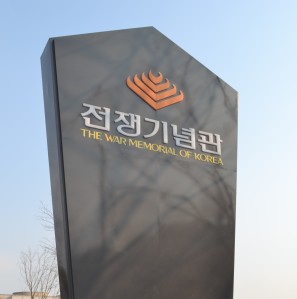
Both of my grandfathers fought in the Korean War, so I knew I had to see the memorial.
It was a very moving memorial and museum. From the exhibits I could tell that the South Koreans were grateful for all the help they received from other countries during the war, and that they long to be reunited with North Korea someday.
I couldn’t help but wonder if my grandfathers were friends with some of the men who died during the war. I left very grateful that they both made it home safely.
After spending the morning at the war memorial, I decided it was about time to go look for souvenirs before I had to head home. First, I tried going to Namdaemun Market. I was disappointed when I got there though. The market is very similar to Dongdaemun and Myeongdong. There was a lot of clothing, accessories, jewelry, and some big department stores. It wasn’t what I was looking for. I didn’t waste my time there so I headed to the last market on my list, Insa-dong.
Despite Insa-dong being a tourist trap of souvenir shops, it was my favorite market. The street was lined with shops selling all kinds of different hand-made crafts, art galleries, and of course some souvenir shops. If you only have time to go to one market in Seoul, you should make Insa-dong your priority. I got all of my Seoul souvenirs there.
The side streets had a lot of restaurants and I had difficulty choosing one for lunch because they all looked delicious.For some reason this cracked me up:
“Fire Beef Sushi”
After lunch (I chose bulgogi) I had some time on my hands. I decided I wanted a chance to see the traditional Korean houses, hanoks, a little better, so I went to the Namsangol Hanok Village in Chungmuro. There are 5 restored hanoks that visitors can visit and look inside of.
I’m lucky that I went on a Saturday, because there were student volunteers there to give tours in English! The tours were free and I could tell that the students were doing it to practice their English. It was an informative tour and I would recommend it.
To finish my last day in Seoul I went back to the Gyeongbok Palace area to see the Cheonggyecheon stream light up at night. I was expecting the river to turn different colors like blue or red, but I saw something completely different!
Light was projected onto a wall of water to make a show. It was pretty neat. Also some cool designs were projected on the wall by the stream. I think they moved around with the people looking at them.
My last picture of the night, a panorama of the area around the stream.
The next day I took a plane back to Tokyo. Seoul was great and I would love to go again. There was so much that I didn’t get to see!
Thanks for reading!
Part 2/3
On my first full day in Korea, I got an early start around 7:30 am. I checked out of the jjimjilbang (Korean all-night spa) and headed to Dongdaemun station. That day I was meeting a friend from America who happened to be in Seoul at the same time for work. We were going to meet at Gyeongbok Palace when it opened at 9 am.
I was worried that I would get lost on my way to the palace, but the Seoul subway system was very easy to use, even during the morning rush hour. It seems like there is a train every 3-5 minutes. I got there in plenty of time and got to see the palace in the early morning light.
When my friend got there we bought our tickets and took a look around. There were English signs in each area to tell us what we were looking at. I was very happy to see that Gyeonbok Palace was the birth place of the Korean alphabet (Hangul) and the first place in Korea to get electricity. It was very beautiful. I could also see that it was heavily influenced by Chinese architecture.
There was a large garden at the palace, but it was too early in the year for any of the trees to be blooming. I’m sure it would have been beautiful a few weeks later.
Near the palace grounds there are two museums, the National Folk Museum of Korea and the National Palace Museum of Korea. I had time to tour both. The National Folk Museum had a lot of English explanations posted around and was educational and enjoyable. The National Palace Museum had very little English, but the exhibits were beautiful. The National Palace Museum provides free guided English tours. I didn’t arrive in time to go on one, though.
My Chinese zodiac animal is the rabbit.
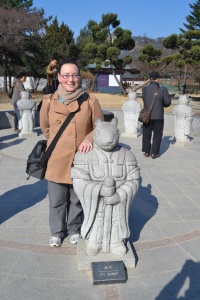
Before we left we were lucky to catch a reenactment of the changing of the guards at the palace gate.
After Gyeonbuk Palace, I said goodbye to my friend and headed over to Changdeok Palace. This palace is a UNESCO World Heritage Site. The palace buildings were a little similar to Gyeonbuk Palace, but the layout was different. There was also an even bigger garden, but it can only be viewed on a guided tour. I didn’t think it would be very nice this time of year, so I skipped the garden.
I saw a palace building with a parking space for cars for the first time here.
After touring the palace grounds I walked over to the Bukchon Hanbuk Village that was nearby. This is an area of Seoul that has very old traditional houses that are still being lived in. Many of the houses were surrounded by high walls however. The area was perfect for a quiet stroll, and the streets were lined with shops and restaurants. I enjoyed this peaceful area.
After getting some bibimbap (vegetables and an egg served on rice in a hot bowl)for lunch, I decided it was about time to check into my youth hostel. I booked a hostel in Dongdaemun so that I could stay close to the action. Dongdaemun is close to many of the big tourist attractions, so I think it was the perfect area to stay.
I came across some performances in Dongdaemun that night. It looked like a dance competition.
That night, I decided to check out another night market in Myeongdong. I really liked Myeondong a lot. It felt a lot like Shibuya or Shinjuku in Tokyo. There were vendors lining the streets selling clothing, jewelry, handbags, souvenirs, and food. There were also regular stores like H&M and Zara. From Myeongdong you can see the N Seoul Tower, which lights up every night. I explored a lot of side streets and thought about buying some souvenirs, but I had a feeling they were overpriced. This night market wasn’t open as late as Dongdaemun. Shops started closing around 9pm. I had Korean style barbecue for dinner and then made my way back to the hostel for some much needed rest.
Part 3 is coming soon!
Part 1/3
This was my third trip out of Japan to a nearby country, and my first trip alone! Seoul was a great choice for a solo trip. The flight time was short, about 2 hours from Tokyo. Navigating the Seoul metro system was ridiculously easy and also very cheap. Each one way trip only cost about $1 (US). Also, there was English everywhere, and where there wasn’t English, there was Japanese. Being bilingual is great sometimes!
My plane was taking off at 6:20 pm in Tokyo and would land in Seoul at 9:10 pm, so I made a point of getting my currency exchanged to Korean won before getting on my plane in Tokyo. But when I arrived in Seoul, despite the late hour, the currency exchange was still open! I’ll keep that in mind in the future. From the airport I took a train to Seoul station.
So it’s 11pm, I’m alone in Seoul, what do I do? I go to a night market of course! There is a great night market in Dongdaemun that is open from 8 pm to 5 am. Dongdaemun is a short ride from Seoul Station. I arrived and put my bag in a coin locker ($3) and headed out to see the sights. There were a lot of people out shopping and eating food from street stalls.
A stall selling some kind of omelet. I had a hot dog at a different stall later.
The market wasn’t exactly what I was expecting. The items for sale were clothing, accessories, and cosmetics. Not very many souvenir type things. If you are serious about getting some clothes from Korea, then this is the place for you. The shoppers were a mix of people looking for good deals (everything was very cheap) or people looking for wholesale items to use in their own stores the next day. I simply looked around and enjoyed the atmosphere.
Around 1 am I got tired and went to a tourist information booth (open at night!) and asked for the location of a Korean spa (jjimjilbang). I was directed to one in the basement of a large department store across the sidewalk. Why go to a spa? Because it is a cheap place to take a bath, get something to eat, and take a nap.
I really recommend staying in a jjimjilbang if you are in a pinch and need somewhere to sleep. I stayed the night for only 10,000 won ($10). When you enter, they give you a key with a number on it, take your bag, and give you some towels, a t-shirt, and shorts. First, you lock up your shoes in the foyer, then you go into the locker room to change and lock your belongings into a bigger locker. I was expecting the spa to be similar to a Japanese onsen, so I didn’t bring any of my shampoo or conditioner with me. Unfortunately the spa only provided a bar of soap. I made sure not to get my hair wet and took a relaxing bath and watched some television. There were a lot of other Korean ladies there doing the same thing, washing their hair, and brushing their teeth. It was a nice atmosphere. When I was ready for bed, I put on the provided t-shirt and shorts and found an empty bed in the sleeping room. Yes, there was a sleeping room full of beds. There weren’t any blankets, but it was warm enough inside without one. I got about 5 hours of sleep. Around 7 am everyone’s cell phone alarms started going off though so I took another bath and left around 7:30.
I don’t want to make this post too long, so I’m breaking my Seoul trip up into 3 parts.
Stay tuned for Part 2!
I can’t believe it’s already February! The new year is flying by fast. I hope everyone is keeping warm. One of the best ways to keep warm in the winter is to visit an onsen, or hot spring. Luckily, I live in Gunma Prefecture, where there are many amazing hot spring towns to visit. Recently I went to Kusatsu, a hot spring town that consistently ranks in the top 3 in Japan.
Steam rises from the hot spring water in the center of the town.
I got on the train to Kusatsu at 11 in the morning on a Saturday. After a quick transfer one station over, it was a relaxing 1 hour trip to Naganohara-kusatsuguchi station. From the station there is a bus to the center of town. The bus ride was about 25 minutes long. Then, the hotel offered a pick up service from the bus terminal. I finally arrived!
A typical hot spring trip involves staying at a hotel that has private baths (indoor and outdoor), scenic views, and a dinner service, as well as breakfast. Meals consist of Japanese cuisine, and are usually quite good, though sometimes I’m not sure what I’m eating. Guests are served in their rooms, or if your party is big enough, in a private dining room. This type of hotel stay and meal plan can cost more than 10,000 yen (more than $100). It’s worth it though!
After checking in to the hotel and dropping off bags, I headed into town to do some shopping and enjoy the quaint atmosphere. The streets are lined with shops selling souvenirs, restaurants, cafes, and vendors selling hot food and drinks. There’s so much to see!
A side street in Kusatsu.
Be sure to try the onsen tamago when you visit! Soft-boiled eggs cooked in a hot spring!
A view of the hot spring water flowing in the center of town.
A trip to Kusatsu, or any hot spring town, can easily be done in just a day as well. You don’t need to stay in a hotel to enjoy the natural hot water. There are free baths and some paid baths around town that usually sell towels for you to use. There are also many foot baths for people to enjoy along the streets.
After some sightseeing, I went back to the hotel to get into the bath before dinner. I used the bath again after dinner, too. And after breakfast! The water is full of minerals that makes your skin really smooth and supposedly is good for your health. It’s also really fun!
On Sunday morning I went into town again to get some last minute souvenirs and enjoy the foot baths. I didn’t have time to go to any of the free baths around town though. I would definitely go again, probably on a day trip!

